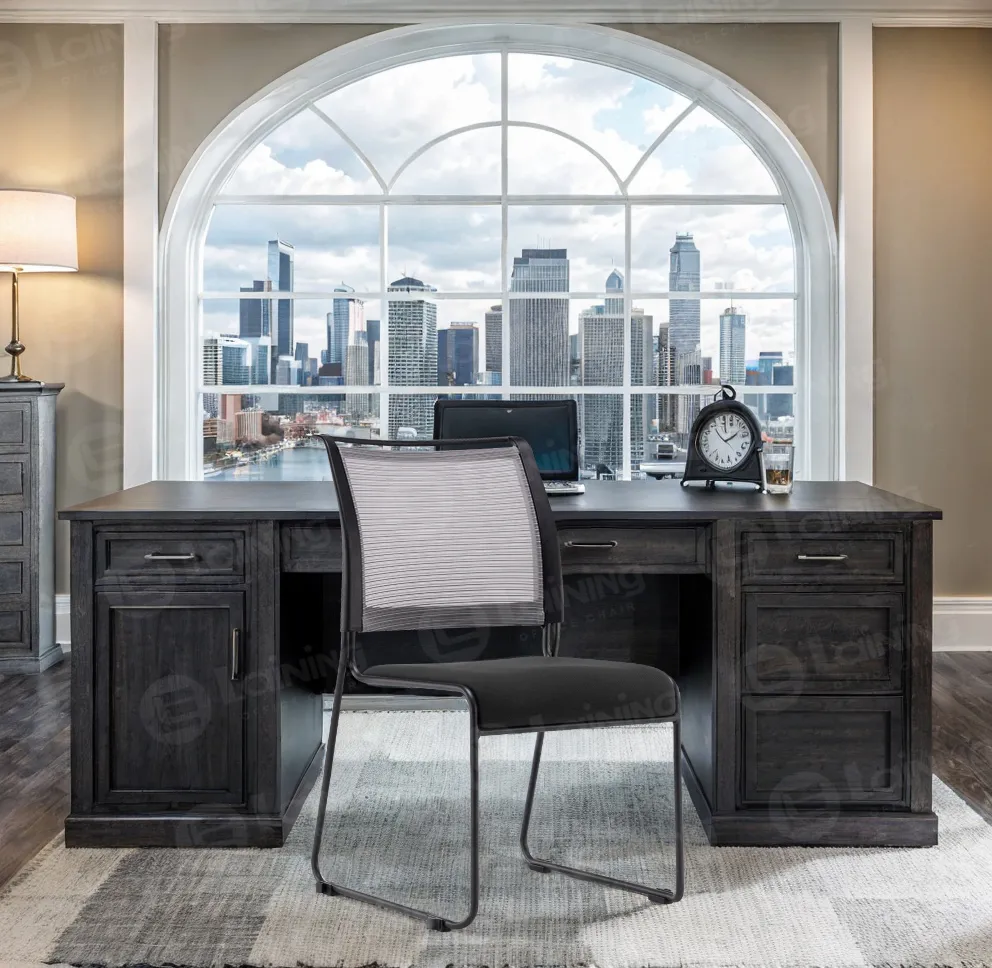It Is Important For The Ergonomic Drafting Chair To Provide Sufficient Support For The Entire Spine
It is crucial to provide sufficient support for the entire spine when choosing an ergonomic Ergonomic Drafting Chair. Drawing work typically requires prolonged sitting posture and may require leaning forward for fine manipulation. If Ergonomic Drafting Chair cannot provide sufficient back support, especially for the waist and chest, it may lead to various health problems, including back pain, neck stiffness, and chronic fatigue.

Ergonomic Ergonomic Drafting Chair should have adjustable lumbar support
The waist is an important component of the spine, and a lack of proper support can lead to excessive bending of the lumbar spine, increasing pressure on the lumbar muscles. The adjustable ergonomic draughtsman chair lumbar support can be adjusted according to individual needs to ensure that the lumbar spine maintains its natural curve and reduces the burden on the waist.
The height and inclination of the Ergonomic Drafting Chair chair back are also crucial
A draughtsman chair with arms back at a suitable height can support the entire back and reduce pressure on the spine. The adjustable tilt allows users to adjust their sitting posture according to work needs, avoiding maintaining a single posture for a long time and relieving back fatigue.
The seat cushion of Ergonomic Drafting Chair should also have sufficient support and comfort
A cushion that is too soft can easily cause the buttocks to sink, affecting the natural curve of the spine. A hard cushion will increase the pressure on the buttocks and affect blood circulation. Therefore, choosing a drafting ergonomic chair with good support and comfort is crucial for maintaining a healthy sitting posture.
In summary, when choosing drafting chair adjustable arms that conform to ergonomics, it is necessary to pay attention to their support for the entire spine. By choosing an Ergonomic Drafting Chair with adjustable lumbar support, appropriate height and tilt of the chair back, and a seat cushion with good support and comfort, spinal health can be effectively protected, work efficiency can be improved, and various health problems related to prolonged sitting can be prevented.
Ergonomic Drafting Chair FAQs
What is Ergonomic Drafting Chair? What is the difference between it and a regular office chair?
Core function: Designed specifically for high tables (such as drawing tables, laboratory countertops, or standing tables), the seat height is adjustable (usually within a range of 6090cm), with foot pedals and lumbar support.
Difference comparison:
Ordinary office chair: Suitable for standard desk height (7075cm), cannot be raised to a high position.
Ergonomic Drafting Chair: Must be equipped with an extended air column and an anti slip large base to prevent high-level tilting.
Why does Ergonomic Drafting Chair need a foot ring? How to use it correctly?
Function: Relieve leg suspension pressure and promote blood circulation (especially during prolonged sitting).
Usage tips:
- Adjust the seat height so that the soles of the feet naturally fit the foot pedal (the knee cap is slightly lower than the hip joint).
- Choose a foot pedal that is rotatable/adjustable in angle (such as HON Volt).
Attention: Models without foot pedals need to be used with a foot stool.
How to choose the appropriate height for Ergonomic Drafting Chair?
Match in two steps:
- Measure desktop height:
Standard drawing table: 90120cm (chair height ≥ 60cm).
Supporting standing table: The chair height should be able to be lowered to a regular height (such as 40cm).
- Verify the adjustment range:
Ensure that the air column supports a minimum sitting height of ≤ 48cm and a maximum of ≥ 90cm (such as Eurotech Vera).
Is it necessary to have lumbar support and armrests for the 4Ergonomic Drafting Chair?
Select based on the scenario:
Waist support: Required! The pressure on the lumbar spine is greater when sitting in a high position, and an adjustable depth lumbar support (such as Steelcase Leap) is recommended.
Handrail:
Suitable for precision drawing: the adjustable armrest assists in stabilizing the elbow.
Flexible requirements: Choose a foldable storage armrest (to avoid obstructing access to the desktop).
Do the wheels of the Ergonomic Drafting Chair require special design?
yes! Must meet:
Floor compatibility:
Hard wheel (PU material): protects the wooden floor and is quiet.
Soft wheels (rubber): Scratch resistant ceramic tiles/epoxy resin flooring.
Locking function: Fix Ergonomic Drafting Chair (such as Herman Miller Aeron Stool's wheel lock) during drawing.
share:
-
Comfortable Meeting Room Chairs: Ergonomic Seating Solutions for Global WorkspacesFréttirNov.25,2025
-
Chairs Meeting Room: The Ultimate Guide to Choosing Ergonomic, Sustainable SeatingFréttirNov.24,2025
-
The Global Appeal and Practical Benefits of Blue Meeting Room Chairs | Laining GlobalFréttirNov.23,2025
-
Black Meeting Room Chairs: Durable, Ergonomic & Stylish Seating for Modern WorkspacesFréttirNov.23,2025
-
Stackable Meeting Room Chairs - Durable, Efficient & Space-Saving SolutionsFréttirNov.22,2025
-
Office Meeting Room Chairs – Comfort, Durability & Sustainability in Modern OfficesFréttirNov.22,2025
-
Choosing the Best Office Chairs for Meeting Rooms: Comfort Meets StyleFréttirNov.22,2025









